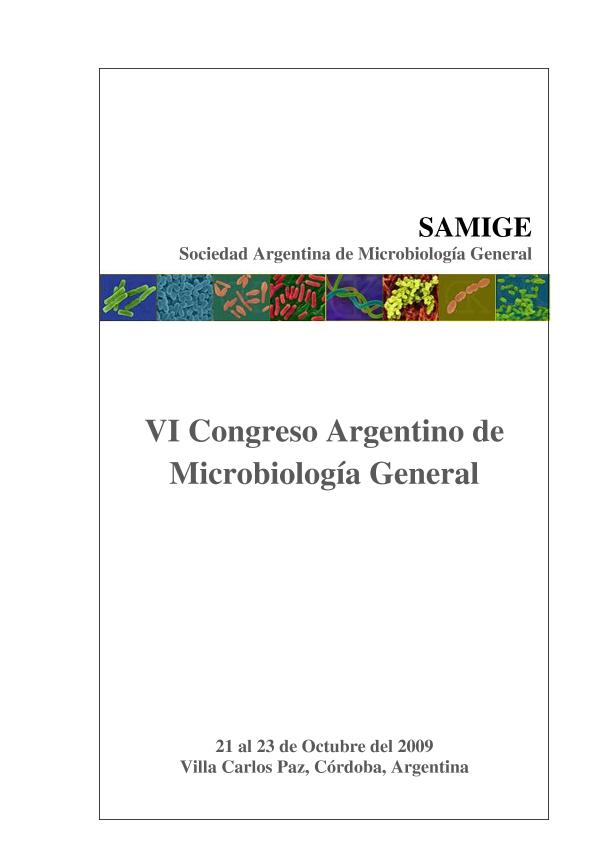Mostrar el registro sencillo del ítem
dc.contributor.author
Maturano, Yolanda Paola

dc.contributor.author
Toro, Maria Eugenia

dc.contributor.author
Castellanos, Lucia Ines

dc.contributor.author
Vazquez, Fabio

dc.date.available
2023-04-21T18:24:04Z
dc.date.issued
2009
dc.identifier.citation
Pectinolytic activity expressed by yeasts isolated from oenological environments; VI Congreso Argentino de Microbiología General; Villa Carlos Paz; Argentina; 2009; 110-111
dc.identifier.uri
http://hdl.handle.net/11336/195004
dc.description.abstract
Introduction: Pectolytic enzymes play an important role in the winemaking process due to the fact that they improve the extraction of colour and aroma compounds. They also improve clarification and filtration processes of musts and wines. These enzymes break up pectin and weaken the cell wall, reducing the viscosity of musts and improving the extraction of the different compounds. Pectinases used in the food industry are commercially produced by Aspergillus niger. Saccharomyces and non- Saccharomyces yeasts present an alternative source for the large-scale production of commercial enzymes. Yeasts have advantages compared to filamentous fungi with regard to the production of pectinases, because they are unicellular, their growth is relatively simple, and in some species the growth medium does not require an inducer. The aim of this work was to study the pectinase activity of 162 isolated yeasts (47 non- Saccharomyces and 115 Saccharomyces sp.). Qualitative assay was carried out on plates with pectin as substrate, at 25ºC, pH 4.0 and 6.5 during 72h, in order to select yeasts having pectinolytic activity. Results were considered positive when colonies were surrounded by a degradation halo. After that, those isolates were grown anaerobically, for 72 h at 30ºC using two media: an inducing medium (0,67% YNB; 0,5% pectin and 10% glucose), and a non-inducing medium (0,67% YNB; and 10% glucose). For determination of pectinolytic activity, a reaction mixture of 0.1 ml of supernatant, 0.9 ml of 0.5% (w/v) pectin in 0.05 M sodium acetate buffer (pH 5) was used. It was prepared and incubated in a water bath at 37°C for 1 h (yeasts inoculated in inducing medium) and 24 h (yeasts inoculated in non-inducing medium). Pectinolytic activity was determined by estimation of reducing sugars by DNS technique. Results: of the 162 yeasts, 24 isolations were able to hydrolyze pectin under both pH conditions (14 Saccharomyces sp. and 10 non- Saccharomyces). Highest amounts of yeast isolations were detected at pH 6.5. All yeasts, developed in inducing and non- inducing media, expressed pectinolytic activity. Fifty percent of species from Saccharomyces genus registered the greatest values of pectinolytic activity growing in inducing medium. All species belonging to the non-Saccharomyces genera which were cultured in non-inducing medium expressed highest activity. This suggests that pectinase synthesis may be partially constitutive for these non- Saccharomyces yeasts. Conclusion: this study clearly revealed the potential of indigenous yeasts to produce useful enzymes to catalyze desired biotransformations during wine fermentation and they offer an alternative source of these enzymes as well.
dc.format
application/pdf
dc.language.iso
spa
dc.publisher
Sociedad Argentina de Microbiología General
dc.rights
info:eu-repo/semantics/openAccess
dc.rights.uri
https://creativecommons.org/licenses/by-nc-sa/2.5/ar/
dc.subject
Pectinolytic activity
dc.subject
Yeasts
dc.subject
Oenological environments
dc.subject.classification
Biología Celular, Microbiología

dc.subject.classification
Ciencias Biológicas

dc.subject.classification
CIENCIAS NATURALES Y EXACTAS

dc.title
Pectinolytic activity expressed by yeasts isolated from oenological environments
dc.type
info:eu-repo/semantics/publishedVersion
dc.type
info:eu-repo/semantics/conferenceObject
dc.type
info:ar-repo/semantics/documento de conferencia
dc.date.updated
2023-04-11T12:10:31Z
dc.journal.pagination
110-111
dc.journal.pais
Argentina

dc.description.fil
Fil: Maturano, Yolanda Paola. Consejo Nacional de Investigaciones Científicas y Técnicas; Argentina. Universidad Nacional de San Juan. Facultad de Ingeniería. Instituto de Biotecnología; Argentina
dc.description.fil
Fil: Toro, Maria Eugenia. Universidad Nacional de San Juan. Facultad de Ingeniería. Instituto de Biotecnología; Argentina. Universidad Nacional de San Juan. Facultad de Ciencias Exactas, Físicas y Naturales; Argentina
dc.description.fil
Fil: Castellanos, Lucia Ines. Consejo Nacional de Investigaciones Científicas y Técnicas. Centro Científico Tecnológico Conicet - Tucumán. Planta Piloto de Procesos Industriales Microbiológicos; Argentina. Universidad Nacional de Tucumán. Facultad de Bioquímica, Química y Farmacia; Argentina
dc.description.fil
Fil: Vazquez, Fabio. Universidad Nacional de San Juan. Facultad de Ingeniería. Instituto de Biotecnología; Argentina
dc.relation.alternativeid
info:eu-repo/semantics/altIdentifier/url/https://samige.org.ar/wp-content/uploads/2022/10/Libro-SAMIGE-2009.pdf
dc.conicet.rol
Autor

dc.conicet.rol
Autor

dc.conicet.rol
Autor

dc.conicet.rol
Autor

dc.coverage
Nacional
dc.type.subtype
Congreso
dc.description.nombreEvento
VI Congreso Argentino de Microbiología General
dc.date.evento
2009-10-21
dc.description.ciudadEvento
Villa Carlos Paz
dc.description.paisEvento
Argentina

dc.type.publicacion
Book
dc.description.institucionOrganizadora
Sociedad Argentina de Microbiología General
dc.source.libro
Libro de resúmenes del VI Congreso Argentino de Microbiología General
dc.date.eventoHasta
2009-10-23
dc.type
Congreso
Archivos asociados
